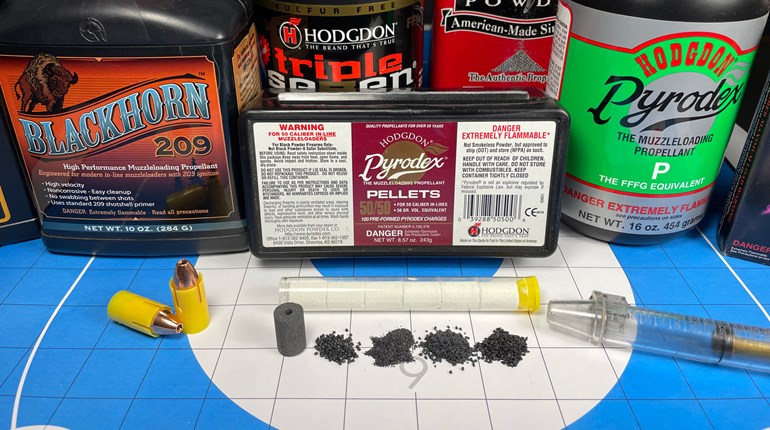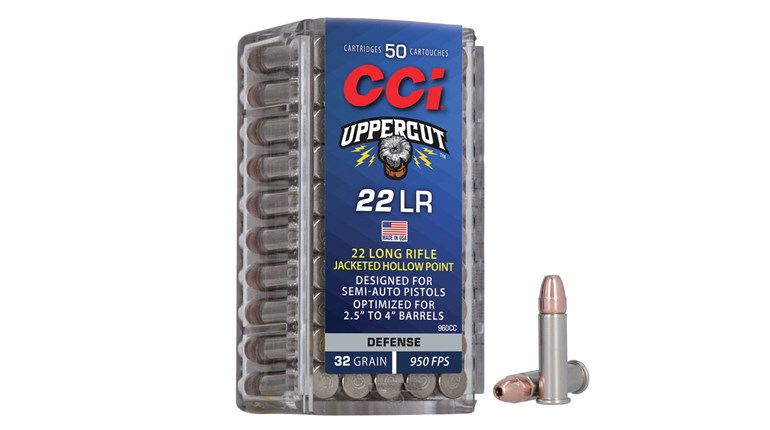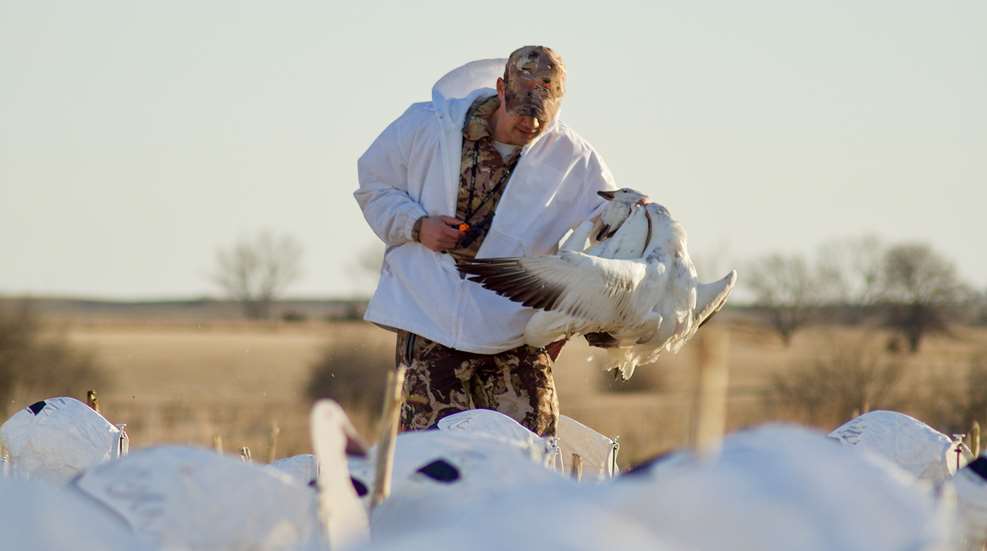
The spring snow goose migration is one of the most unique natural phenomena in North America. From January to early June, millions of white geese fly from their wintering grounds in the southern reaches of the U.S. to the coastal marshes and boreal forests of Canada. Along the way, there are tens of thousands of hunters with unplugged shotguns waiting, blasting electronic callers over massive decoy spreads as tornado machines spin flyers (kites in the shape of snow geese) below—it’s a waterfowling circus.
Snows drop from the stratosphere in flocks by the hundreds, sometimes thousands. When they’re in range, hunters unleash a firestorm of steel shot—you can easily burn through 10 rounds if an extension magazine is affixed to your 12-gauge. With enough shooters and the right guide calling the shot, dozens of birds die in a single volley. It’s no wonder so many hunters get addicted to snows. But it takes a lot of time and money that many of us don’t have to get under these big spins of white geese. That’s why plenty of hunters employ an outfitter during the spring.
But you have to be careful who you book with. Guided snow goose hunts lend to fly-by-night operations that are only out to take your money. To avoid getting ripped off, here’s how to properly vet an outfitter before you go.
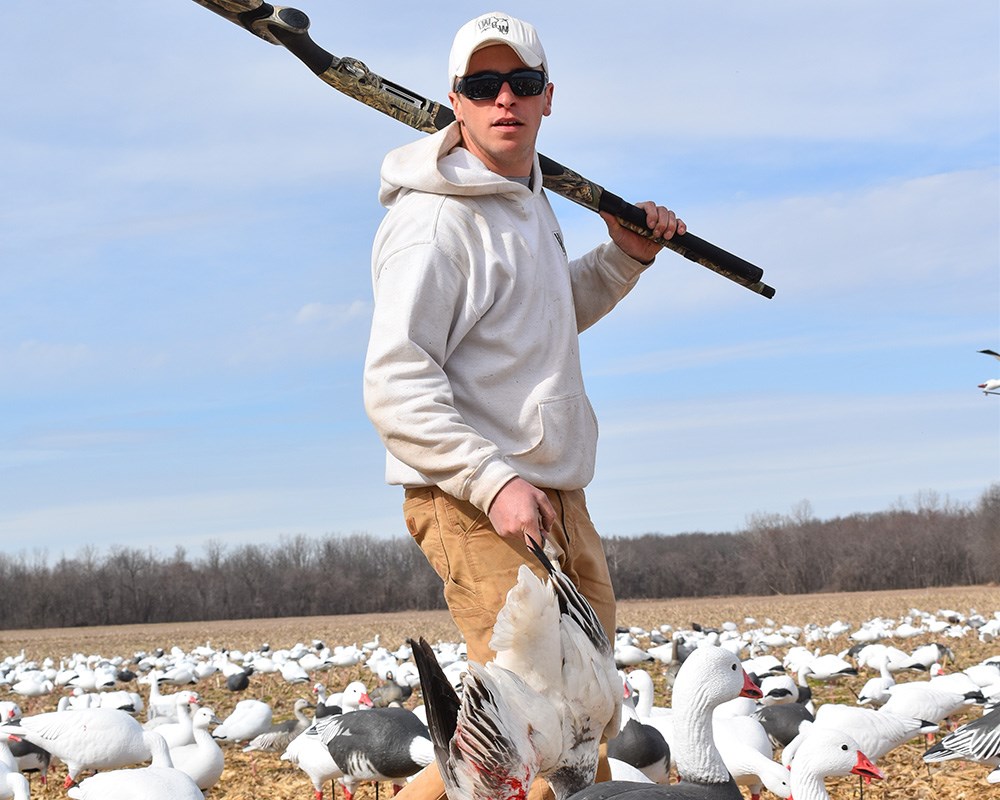
Spring Snow Goose Rules
The snow goose conservation order (it’s not a season) applies to the Central, Mississippi and Atlantic flyways. There is no order in the Pacific flyway, though you can goose hunt in some Western states until mid-March. In the U.S., it’s legal to affix an extension magazine to your shotgun and there are no daily limits. In Canada, hunters must keep plugs in and there are limits, so check the provincial regulations before you go.
You still must abide by all other migratory bird laws during the spring order. Laws like wanton waste (making an insufficient effort to retrieve birds from the field), party hunting and not tagging birds all apply. Ryan Warden is a former guide who plead guilty to improperly tagging migratory birds. As a result, he started Toe Tags LLC so waterfowl hunters can stay legal. He recommends snow goose hunters keep their birds with them at all times and be sure to claim birds after every volley—don’t pile them up.
“It’s hard to know who shot what snow goose when hunting with multiple shooters,” Warden said. “But a legit guide knows the rules.”
So, ask guides how they handle in-field possession and transportation of dead geese out of the field. Bring your own tags, and put them on your geese. And do not leave your birds until you get back to your primary means of transportation (likely your vehicle). If you leave birds in the field (tagged or not) and walk back to the truck or pile all the geese into the bed of an ATV and can’t identify the birds you shot, that’s a violation of migratory bird law.
Finding a Reputable Guide
Duck guides are a small community. Snow goose guides are even smaller. That tends to weed out poseurs quickly. But every season there are dishonest folks who only want your money and care little about putting you on birds. The easiest way to vet a snow goose guide is to ask them who they have guided with or who they buy decoys from, and then ask to talk to those references. If their response is that they have never guided with another outfit or never bought a decoy spread off another snow goose hunter, that’s a sign to move on.
“Most of us know each other,” said Ducks Unlimited TV producer John Gordon, a former Texas snow goose guide. “If you call me and I have never heard of the guy, and no one I know has heard of him, find someone else.”
Also, never book with a guide that doesn’t have a website. If they operate solely using social media, that’s another red flag. It takes little effort to open an Instagram account or create a Facebook page. An outfitter with a website is at least taking the time to build a platform. It shows they are invested. Lastly, ask the outfit what their policy is if you have a slow hunt. Some guides will let you come back for no cost or a reduced rate if there isn’t much action.
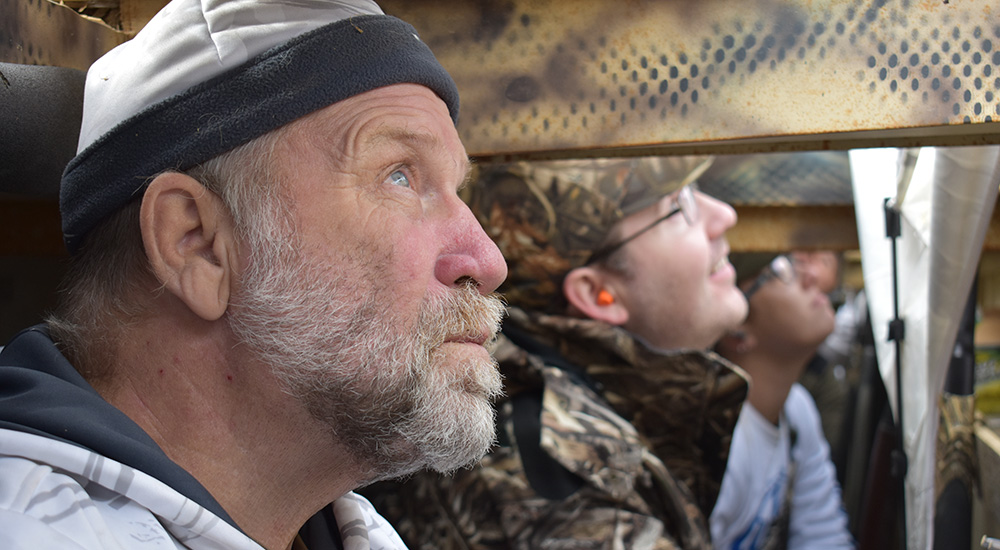
Know When to Go
Snow geese are unpredictable. An experienced guide will be able to give you a time frame when they have historically done well, but your best bet for a good hunt is to be able to leave on short notice. Ask the guide when they think is the optimal time to come. That will give you a better chance to hit the migration right, but if you can swing it, ask the guide to call you when there is a massive influx of birds.
Adult snows move north first, and are the hardest to kill, so be leery of a guide that books you for opening day. You want to hunt the juveniles because they haven’t made this migration before and are not as wary. It may be that the outfit always does well the first few days of the order. Just inquire why they want you there so early. For example, if a guide in South Dakota wants you to hunt Feb. 15 and there is a foot of snow on the ground, look elsewhere.
The Gear You Need
Different locations require different types of gear. You need a shotgun of course, and it’s nice to have an extension magazine in the U.S., but not a requirement. For ammo, 3-inch No. 2’s, 3’s or 4’s kill snow geese just fine. A case (10 boxes) of shells is usually enough for a three-day hunt, but keep a backup case in the truck. Pattern your shotgun on paper with the shells and choke you intend to use at 40 yards. A modified or improved modified choke is optimal because shots tend to be longer on snows, unless you’re hunting a feed.
Ask the guide what they hunt from—pit, layouts, backboards, etc. If you’re in a pit, the accommodations should be dry and comfortable. But layouts and backboards can be a mess, especially if the field is wet. If that’s the case, wearing waders and a waterproof jacket or white Tyvek suit over your bibs is best. It keeps all the mud and water on the outside, and if you use a Tyvek suit, it can be thrown away after the hunt.
“I tell people to prepare for the day like you’re going to be in the field from shooting time to sunset,” said Sean Herrick, an Illinois snow goose guide. “That means dress accordingly, pack plenty of water and coffee, and bring enough deer salami to feed a pit full of hungry hunters.”















